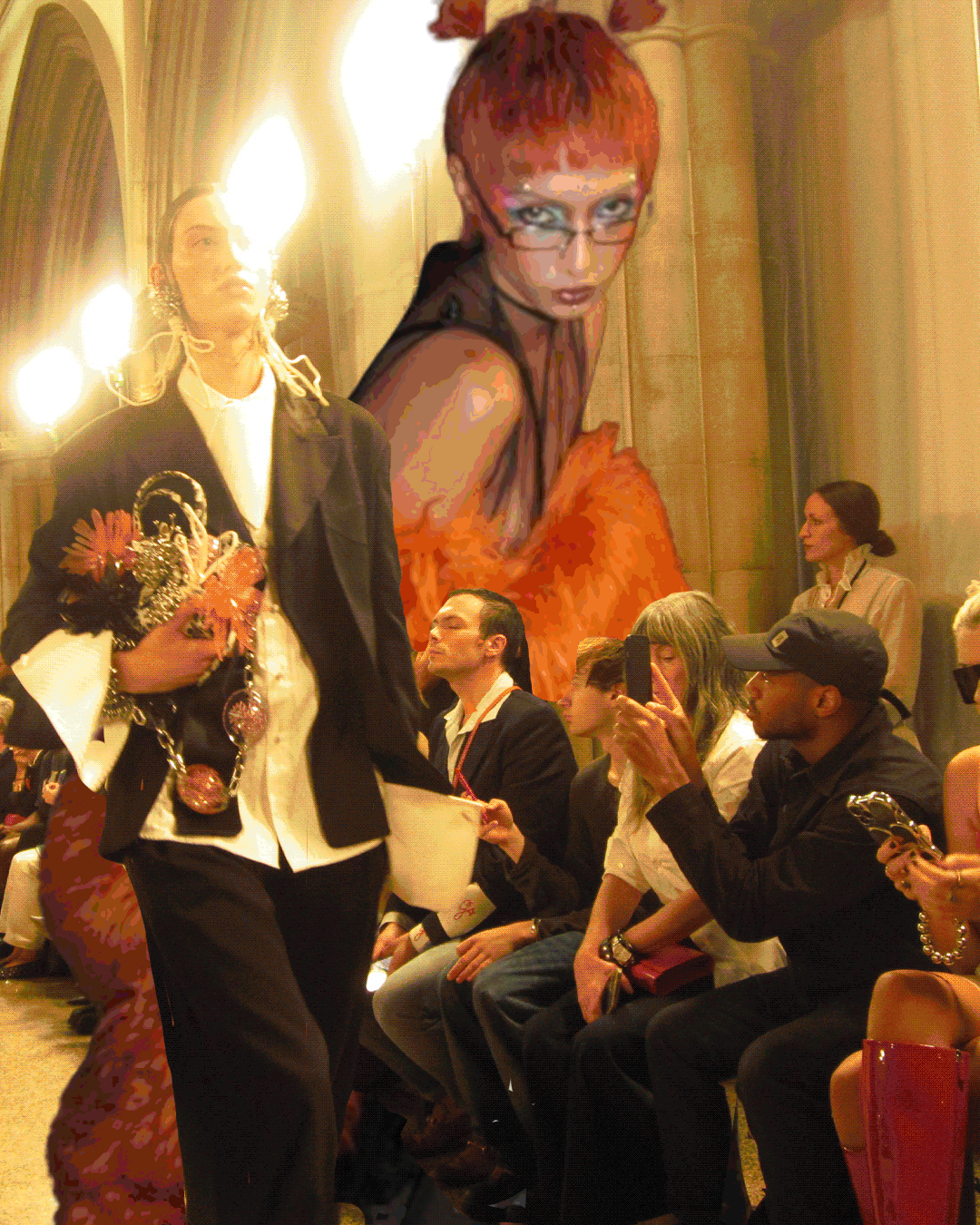Jean Paul Gaultier, uncorseted
- Share via
Reporting from San Francisco — — Talking mannequins with video-animated faces, men in skirts, sweat-stained corsets worn by Madonna and a child’s teddy bear that started it all. Get ready for another museum fashion blockbuster.
“The Fashion World of Jean Paul Gaultier: From the Sidewalk to the Catwalk” opened Saturday at the De Young Museum in San Francisco. The exhibition, which runs through Aug. 19, spotlights almost four decades of the French designer’s collections that pushed the boundaries of gender, sexuality, multiculturalism and good taste — all in the name of promoting diversity — and inspired a generation of enfants terribles (Alexander McQueen, John Galliano and Martin Margiela) along the way.
Seeing the remarkable breadth of the designer’s work is a reminder of how much of what is making fashion news now (gender-bending androgynous models, plus-size cover girls, metrosexual men, the elevation of street style) was done years ago by Gaultier, who turns 60 next month.
More than 140 of his most spectacular men’s and women’s ensembles are featured — some on a moving catwalk — ranging from a dress and bolero jacket made from straw place mats and a $5 jersey from his very first collection in 1976 to a quintessential Paris cabaret cancan skirt with images of trompe l’oeil legs from spring 2011.
His collections can be pointedly political, taking on issues such as France’s anti-immigration laws and gay marriage, or reverent (whether paying homage to the Virgin or to Amy Winehouse six months after her death). But much of his legacy is in presenting images of sexual empowerment, most notably with Madonna. The equestrian dominatrix look on display that he designed for her 2006 “Confessions” tour is quite something.
He revived the cone bra (one he made of newsprint at age 8 is shown on his childhood teddy bear) and designed haute riffs on fetish wear for men and women that helped inspire the neo-burlesque craze. While such transgressive clothing may have caused a stir initially, it is now a visual touchstone of pop stardom.
It seems appropriate that the exhibition, which originated at the Montreal Museum of Fine Arts and traveled to the Dallas Museum of Art, is making its last North American stop in San Francisco, a city known for sexual tolerance. Gaultier, in town from Paris for a host of opening events, praised the city by the bay for “the freedom it represents” and recalled his first trip here in the summer of 1980, when he stepped outside and saw a guy on the sidewalk dressed only in black leather chaps and a cup. (That image is echoed in much of the menswear on display, including the sassy sailor lad looks that open the show.)
Curated by Thierry-Maxime Loriot, the exhibition is organized thematically, with sections devoted to the boudoir, the body and the urban jungle. Loriot collaborated with Montreal-based theater company Ubu Compagnie de Creation on 30 remarkably lifelike animated mannequins with different skin tones and faces designed to reflect Gaultier’s value of individualism.
“For me, elegance is not just clothes. It’s movement,” Gaultier said when we sat down Thursday. During lunch, he held forth on topics including his favorite film to watch on a lazy Sunday (“Muriel’s Wedding”), the one celebrity he’s dying to dress (Miss Piggy) and what’s wrong with the fashion system today. (“There is too much product, too much clothes and not enough people to buy it and wear it. We just design for the ones who work in fashion. It’s incestuous.”)
Both his showmanship and his craftsmanship are front and center in the exhibition, including his use of unusual materials. There’s a mermaid gown with anti-slip bathtub decals for “scales” and a rubber “tail,” and a haute couture peasant skirt that took 242 hours to bead by hand.
Gaultier has always believed that “designers are the catalysts for society.” And he made it his mission to democratize fashion before it became fashionable.
One of his most controversial collections, which is represented in the show, was inspired by the traditional clothing of a group of Hasidic Jews he observed coming out of the New York Public Library.
“It was about respect,” Gaultier said. “I didn’t want to make a joke. My message is always to be yourself.”







